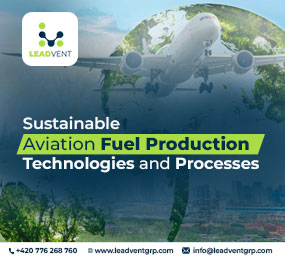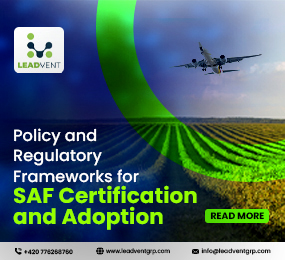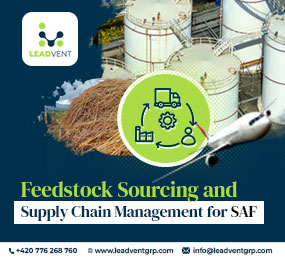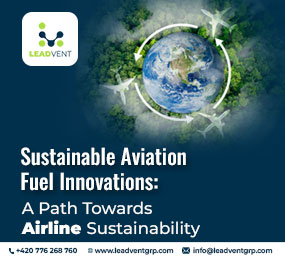The aviation industry has seen sustainability as a pathway to ensuring lower carbon emissions and came across Sustainable Aviation Fuel (SAF) as a crucial solution. However, the proper distribution of SAF requires further development and improved infrastructure for storage. This article provides a comprehensive overview of the key issues surrounding SAF development, presents notable statistics and examples, and highlights the forthcoming World Sustainable Aviation Fuel Forum, a major event dedicated to addressing these challenges.
The Imperative for SAF Infrastructure Development
Moving to SAF also means moving away not only from petrol production but also from the supply chain of production, distribution, and storage. The U.S. Department of Energy has established that any strong and pronounced supply chain for SAF should comprise feedstock production and collection; distribution to SAF production centres; conversion of feedstock to fuel; and distribution of the end product, SAF, to the infrastructure necessary to fuel aircraft.
One significant challenge is compatibility with existing fuel infrastructure, which may require modifications to accommodate SAF. The National Renewable Energy Laboratory (NREL) notes that while third-party-produced SAF can potentially be integrated into refinery storage spaces, this depends on the infrastructure's readiness to blend SAF with conventional jet fuel. Addressing these challenges is essential for efficient SAF transport and cost management, avoiding the high expenses associated with constructing entirely new systems of airline sustainability.
Success Stories on Fostering Infrastructure Development
Several initiatives worldwide exemplify efforts to develop SAF infrastructure:
Gunvor's Investment in Rotterdam: Swiss-based commodity trading firm Gunvor acquired half of Varo Energy's substantial biofuel endeavour valued at $600 million in Rotterdam's port. This flora is meant to generate sustainable aviation fuel and biofuel from trash, abiding by the European Union's goals for augmenting eco-friendly flight fuel. The project was completed with the assumption that the existing port infrastructure should be put into operation to support SAF production and distribution.
Sydney Airport's Kurnell Refinery Conversion: Sydney Airport has proposed a change of use of the old Kurnell oil refinery to produce SAF from domestic agricultural feedstock such as canola oil. Pipelined connection with the airport’s refuelling facilities and including a pipeline from the existing refinery, this action also shows how existing infrastructure can be redefined for the distribution of SAFs, putting Sydney at the vanguard of SAF development production and distribution.
The World Sustainable Aviation Fuel Forum: A Platform for Progress
In response to the complex issues related to SAF infrastructure development, key industry players will gather at the World Sustainable Aviation Fuel Forum. Originally planned to be held on February 26 & 27, 2025, in Amsterdam, Netherlands, this event is aimed at sharing knowledge and establishing a partnership. Attendees will gain insight into market factors, assess the drivers for SAF demand, and go through live examples of successful integration cases.
Only the forum can provide countless opportunities for the exchange of contacts, information about the latest developments in the field of technology, and, most importantly, revelations about how SAF can change the concept of airline sustainability. The forum, having representatives from leading aviation companies, policymakers, and infrastructure developers, will help boost the efforts toward achieving the goal of decarbonisation of the aviation industry.
Characteristics of the World Sustainable Aviation Fuel Forum
This event provides cutting-edge news and project findings related to SAF development and infrastructure advancements, making it the best forum to explore the same events in the fuel sector. Content features include:
- Expert Panels: Insights from industry leaders, policymakers, and innovators.
- Case Studies: Practical examples of successful SAF integration.
- Workshops: Interactive sessions on SAF production and distribution.
- Networking Opportunities: Connecting global stakeholders.
- Market Trend Analysis: More detailed overview of SAF driving sustainability initiatives and decarbonisation through airlines.
Conclusion
Pursuing the essential infrastructures for SAF distribution and storage must be done to achieve the aviation industry’s sustainability agenda. Current challenges, therefore, stand as an avenue for focusing on creating better strategies from existing ones based on international projects. The World Aviation Forum for Aviation Fuels serves as an optimal venue for industry chiefs to unite and implement vital modifications for enhancing environmental sustainability in aviation.
FAQs
What is SAF?
The Sustainable Aviation Fuel is generally bio-fuel, generally extracted from agricultural waste, and designed to lower carbon emissions.
Why is infrastructure development crucial for SAF?
SAF blends fully into the existing infrastructure supporting the fuel supply chain and must take its rightful place in distribution and storage. Establishing the correct infrastructure guarantees the effectiveness and efficiency of distributing SAF to airports and aircraft.
What challenges exist in SAF infrastructure development?
Challenges include the need for modification of existing facilities for SAF, investments in new technologies for safe SAF production and blending, and the guarantee it fits the current fuel systems.
How can stakeholders work together to enhance SAF infrastructure?
Cooperation can look like different stuff, like government and business working together, folks sharing smart ideas, and putting money into making new things. For instance, participation in industry forums like the World Sustainable Aviation Fuel Forum may serve as a point to align strategies and objectives.












